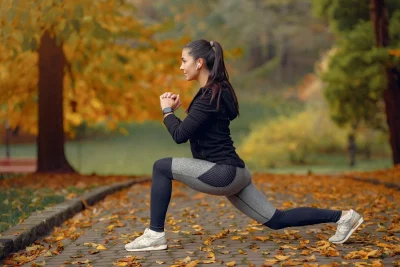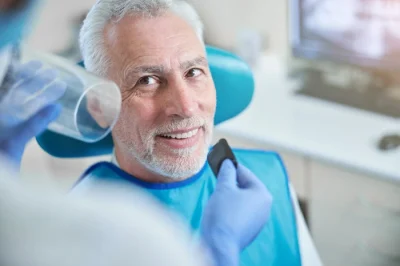What Kind of Massage Is Best for Knots?
Warning: Undefined variable $post in /home/dietofli/public_html/wp-content/plugins/code-snippets/php/snippet-ops.php(584) : eval()'d code on line 3
Warning: Attempt to read property "ID" on null in /home/dietofli/public_html/wp-content/plugins/code-snippets/php/snippet-ops.php(584) : eval()'d code on line 3
The estimated reading time is 5 minutes
Warning: Undefined variable $post in /home/dietofli/public_html/wp-content/plugins/oxygen/component-framework/components/classes/code-block.class.php(115) : eval()'d code on line 3
Warning: Attempt to read property "ID" on null in /home/dietofli/public_html/wp-content/plugins/oxygen/component-framework/components/classes/code-block.class.php(115) : eval()'d code on line 3
Many massage techniques are designed to break those muscle knots, decompress the muscle tissues as well as release tension. If you are a beginner and you have never used massage before, we suggest you go for a relaxing massage. But if you have already enjoyed a few sessions of massage, deep tissue massage will be perfect for your knots. It might feel dynamic but it is a perfect way of reducing your body tension.
It is known for reducing painful knots and realigning the deeper layers of your muscles by combining firm pressure and slow strokes. Deep tissue massage is not a normal massage so you should be prepared that it is not going to be comfortable at all times but it should not be painful in case you experience any pain, be sure to inform your massage therapist and he or she is going to find a perfect balance.
After a deep tissue massage, you should be sure to drink a lot of water because your muscles will release some toxins for you to relax. Alternatively, you can take a nice warm bath as it will improve circulation and it will make you feel even more relaxed.
Be sure to pack some snacks because you might be needing them after a deep tissue massage. The type of massage improves the circulatory systems and it can increase the digestive system and you will need to refill. Other types of massage that are good at relieving pain and breaking those troublesome knots include:
1. Swedish massage.
Most people when hearing about massage, what comes into their minds is the Swedish massage. It focuses on deep as well as complete relaxation but it can also be used to release your cramped muscles. The massage uses different types of techniques which include:
- Effleurage. This technique usually involves a long sweeping of your muscles from top to bottom. It can be done when you are beginning your massage session or at the end but sometimes it can be done at the beginning and the end.
- Petrissage. This technique involves rolling and kneading muscles, kind of like kneading bread dough. The pressure will vary from one person to another. A Mobile therapist might focus on the crunchy areas or the tense areas. He will start with a light petrissage and continue adjusting the pressure accordingly.
- Tapotement. This technique usually involves light and rhythmic drumming or tapping. The technique pressure varies from one client to another and it can be either energizing or relaxing.
- Friction. This is the technique that will be very effective for breaking knots and releasing muscle tension. It usually involves deep pressure is applied to a specific muscle to encourage it to release muscle tension
It will be a perfect choice for you if you want to release stress as you relieve body pain and muscle cramping. The therapist you hire will gently help your tense muscles to release so that you can feel some relief. (1)
2. Trigger point.
The trigger point massage is more of the same as deep tissue massage and it normally goes deeper than the Swedish massage. The goal of the trigger point massage is to release all the right points also known as the trigger points that are within your muscle. The trigger points are tight areas that are normally within your muscles that cause pain in another area in your body. What this means is that for example, a trigger point that is on your neck can cause migraine pain or one on your leg can cause pain in your back.
This type of massage does not normally work on the whole body or the entire length of the muscle, its emphasis is normally on releasing specific trigger points on your muscles to alleviate pain. Deep pressure is usually applied to the trigger point and then released over and over to the point where the trigger point is released. It is a perfect choice for chronic pain and for anyone who has muscle tension or pain.
3. Myofascial release.
This type of massage is more of the same as trigger point massage. It usually targets the trigger points within the fascia and it helps relieve pain throughout the body. Fascia is a thin layer of connective tissues that covers all the muscles that are in your body and when the trigger points in this area are targeted it will release pain from the entire body.
The massage therapist normally starts by massaging all your body and feeling any spots of tightness or tension in the fascia. In normal circumstances the fascia is pliable. But if there are any areas of tightness the massage therapist will work on those areas and increase pressure across the whole area of your body and the fascia will begin to release.
You can even practice this technique in the comfort of your home by using rigid rollers on the backs, legs, and arms. It is a technique that can be very helpful when it comes to relieving pain, especially for those who suffer from fibromyalgia. It is also a good treatment for chronic fatigue syndrome. (2)
4. Craniosacral therapy.
This is a type of massage whereby the massage therapist uses a very light touch to encourage the movement of cerebrospinal fluids around your spinal cord and the brain. The massage technique has the goal of releasing physical imbalances and restricting the muscles of your body to relieve pain gently.
The light touch of this type of massage makes it perfect for people suffering from fibromyalgia as well as other pain syndromes. It can also be very useful when it comes to releasing neck and back pain as well as migraines. Craniosacral massage can also be of help in counteracting the effects of chronic fatigue syndrome.














